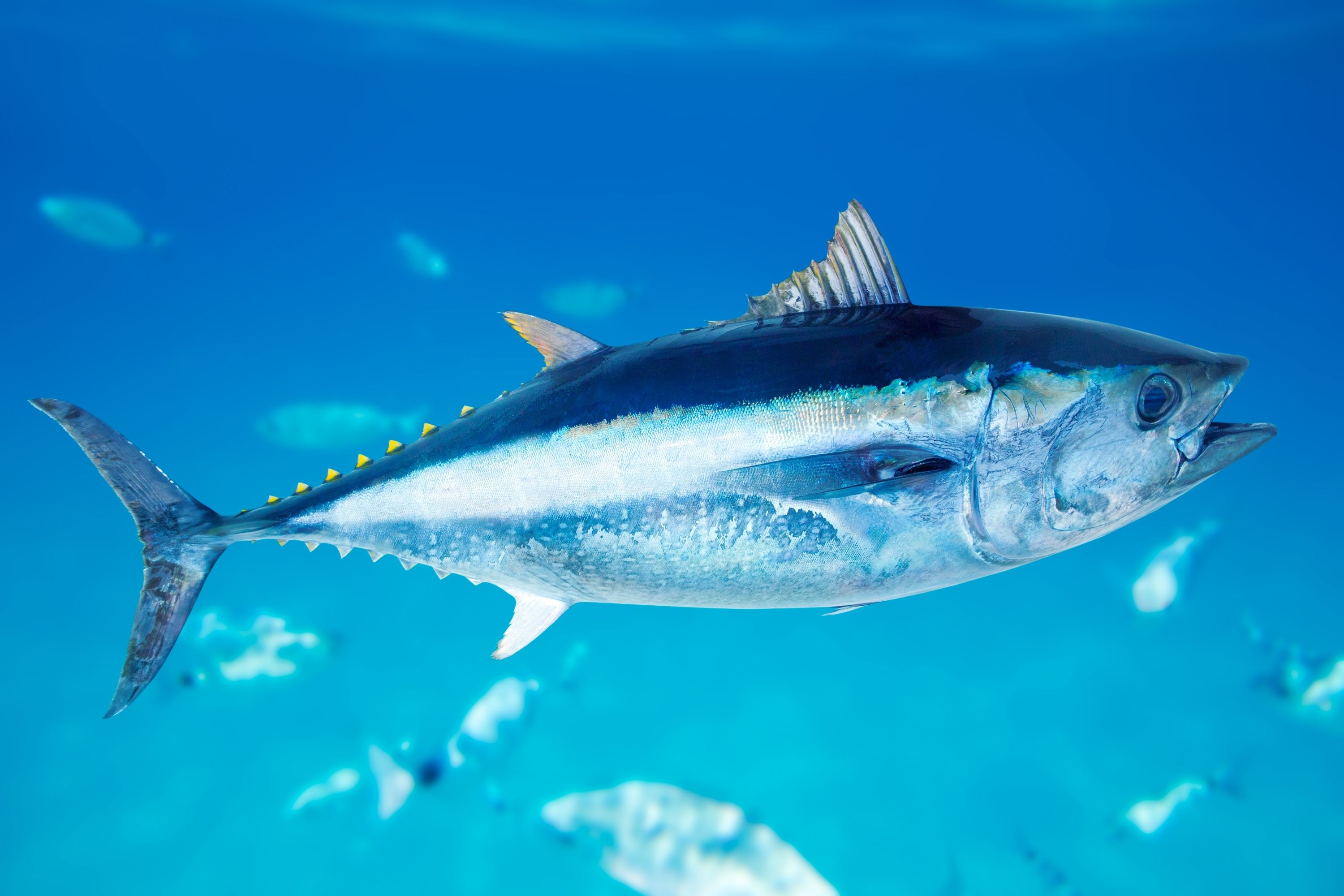Southern bluefin tuna
(Thunnus maccoyii)

Description
The southern bluefin tuna (Thunnus maccoyii) is a tuna of the family Scombridae found in open southern Hemisphere waters of all the world's oceans mainly between 30°S and 50°S, to nearly 60°S. At up to 2.5 metres (8 ft 2 in) and weighing up to 260 kilograms (570 lb), it is among the larger bony fishes. Southern bluefin tuna, like other pelagic tuna species, are part of a group of bony fishes that can maintain their body core temperature up to 10 °C (18 °F) above the ambient temperature. This advantage enables them to maintain high metabolic output for predation and migrating large distances. The southern bluefin tuna is an opportunistic feeder, preying on a wide variety of fish, crustaceans, cephalopods, salps, and other marine animals. The southern bluefin tuna is a predatory organism with a high metabolic need. These are pelagic animals, but migrate vertically through the water column, up to 2,500 m (8,200 ft) in depth. They also migrate between tropical and cool temperate waters in the search for food. The seasonal migrations are between waters off the coast of Australia and the Indian Ocean. Although the preferred temperature range for southern bluefin tuna is from 18-20 °C (64-68 °F), they can endure temperatures as low as 3 °C (37 °F) at low depths, and as high as 30 °C (86 °F), when spawning. This wide range of temperature and depth changes poses a challenge to the respiratory and circulatory systems of the southern bluefin tunas. Tunas swim continuously and at high speeds and, therefore, have a high demand for oxygen. The oxygen concentration in the water changes with the change in temperature, being lower at high temperatures. Tunas are, however, driven by the availability of food, not by thermal properties of water. Bluefin tunas, unlike other species of tunas, maintain a fairly constant red muscle (swimming muscle) temperature over a wide range of ambient temperatures. So, in addition to being endotherms, bluefin tunas are also thermoregulators. The species is listed as critically endangered by the IUCN. Respiratory systems of southern bluefin tunas are adapted to their high oxygen demand. Bluefin tunas are obligate ram ventilators: they drive water into the buccal cavity through their mouth, then over the gills, while swimming. Therefore, unlike most other teleost fish, the southern bluefin tuna does not require a separate pump mechanism to pump water over the gills.
Taxonomic tree:







